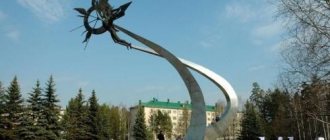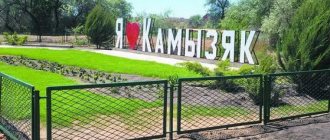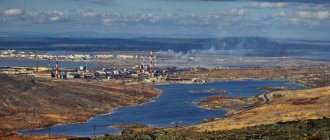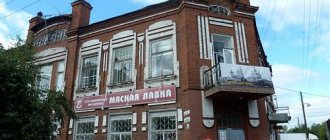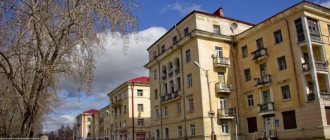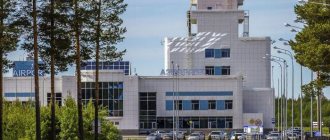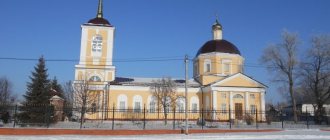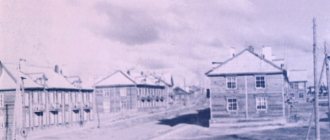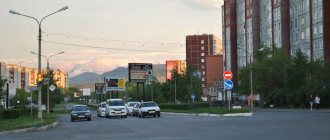Among the eighteen municipal districts of Karelia, Pitkyaranta practically does not stand out in any way. This is a quiet regional center, completely inconspicuous - a typical five-story building, wide streets with rare cars, a house of culture, several monuments and a beach area.
But you can come here for the amazing nature, which amazes with its imagination and ingenuity. Just look at the only road leading to the cities - it winds for eight kilometers along the coast of Lake Ladoga, so that on one side there are overhanging moss-covered rocks and a dense pine forest, and on the other - the blue surface of the lake, smooth as glass in calm weather.
History of creation
One of the most beautiful and history-rich cities in Karelia is Pitkyaranta. It was founded in 1966, translated from Finnish the name means “long shore”. The territory on which it is located was inhabited by tribes of hunters and fishermen eight thousand years ago, and since the end of the 11th century the ancient population of “Korel” lived here. 24 monuments of those times have been preserved; they can be seen on the coast and skerries of the Ladoga region.
The first mention of the village, which was formerly called Kondushi, dates back to 1500, then it consisted of only three households with a population of 30 people, but after 150 years there were 7 households, and the number of residents increased to 50. Most of the territory was farmland, hunting, as a way of obtaining food, faded into the background.
At the beginning of the 17th century, Swedish invaders came to this land, and their presence is associated with the oldest historical site in the area - the Varashev Stone, installed as a border marker between Russia and Sweden in 1918.
After the defeat of Sweden in the Northern War, Pitkäranta returned to the Russian lands. But in 1812, by decree of Alexander I, it passed to the Grand Duchy of Finland; the city again became Russian territory only in 1940.
Pitkäranta gained fame thanks to scientists - metallurgists, geologists and miners. They talked about an unusual almadine stone the color of blackberry juice, and found copper and tin ore. One after another, factories for the extraction and processing of ore began to be built, and after them a glass factory appeared, the products of which were famous for their special strength and quality no worse than the European level. The mines operated until the mid-20th century, but their remains can still be seen today.
Economics[ | ]
By Order of the Government of the Russian Federation dated July 29, 2014 No. 1398-r “On approval of the list of single-industry towns,” the city was included in the category “Single-industry municipalities of the Russian Federation (single-industry towns) with the most difficult socio-economic situation” [30].
The city is located Tsellulozny. The leading place in the city's economy was occupied by the timber and mining complex.
The city has a railway station. Passenger service was discontinued in 2015. In 2022, traffic was resumed: in winter, several flights of the experimental Moscow-Pitkyaranta train took place, then the only passenger train through the station became the daily commuter train Sortavala - Lodeynoye Pole.
Location
The city of Pitkyaranta in the Republic of Karelia stretches in a narrow strip along Lake Ladoga. It is distinguished by magnificent landscapes - dense taiga, rocks, waterfalls, many rivers and lakes, canyons, skerries and sandy hills. Together with the rich flora and fauna, the area is a unique natural museum where you can get acquainted with various rocks and geological structure.
Tourists will be especially interested in the Ladoga skerries - an interlacing of capes, bays and islands and the Uksinskaya esker ridge, declared a geological monument - the only place in Karelia where mountain pine grows.
Sandy beaches, aeolian dunes and pine forests stretch for kilometers along the shore of the lake.
What is rare for Karelia, Pitkyaranta has developed infrastructure and good transport accessibility to the capital of the region. The border with Finland is only 115 kilometers away (Värtsilä border point).
Symbolism[ | ]
Main articles: Coat of arms of Pitkäranta
and
Flag of the Pitkyaranta urban settlement.
The coat of arms and flag were approved on September 15, 2016.
Description of the coat of arms:
In a green field under an azure (blue, light blue) wavy head, encumbered at the waist with a scroll, bordered with silver, double-threaded with black - two picks crosswise and on top of them - a vesuri (national Karelian lopper). All figures are silver. The shield is topped with a municipal crown of the established pattern
Flag description:
The flag is a rectangular panel with a flag width to length ratio of 2:3, reproducing the composition of the coat of arms of the Pitkyaranta urban settlement in blue, white, green and black colors
Economy and population
The population of the city of Pitkäranta in the Republic of Karelia has been constantly declining since 1996; if ten years ago 14,700 people lived here, now there are only 10,530. Such a strong outflow of population is explained by an acute shortage of jobs, the inability to obtain higher education, and weak cultural entertainment sphere, bad medicine. Young people are increasingly leaving in search of a better life in larger cities - Petrozavodsk, St. Petersburg and Moscow.
The economic basis of the city is the forestry, pulp and paper and wood processing industries, which account for 4% of the total production of the entire republic.
Outside of Karelia, Pitkyaranta is known not only for the beauty of the Ladoga skerries, but as the most convenient starting point to the famous island of Valaam.
Climate[ | ]
- Average annual air temperature - 2.7 °C
- Relative air humidity - 79.3%
- Average wind speed - 3.0 m/s
| Average daily air temperature in Pitkäranta according to NASA[8] | ||||||||||||
| Jan | Feb | Mar | Apr | May | Jun | Jul | Aug | Sep | Oct | But I | Dec | Year |
| −9.9 °C | −9.3 °C | −5.0 °C | 1.8 °C | 8.9 °C | 14.0 °C | 16.4 °C | 14.0 °C | 9.1 °C | 3.5 °C | −3.8 °C | −8.4 °C | 2.7 °C |
Attractions
Museum of Local Lore named after V.F. Sebina
The museum has a large and varied collection of antiquities that tell about the life and culture of the peoples who previously lived on the territory of Pitkäranta, as well as the history of the founding of the city and the development of industry.
House of Culture
In this building, shows of city folklore groups are held on an ongoing basis; interest groups work here, in which they try to involve not only young people, but also the older generation.
Monument to V.I. Lenin
A sculpture dedicated to the leader of the proletariat can be found in the very heart of the city. It does not represent any particular artistic value, but it adds variety to the rather dull city landscape.
Peryakul area
The oldest of all urban areas, it may be of interest to you for its ancient, recognized architectural monuments, houses.
There are no other attractions in the city. You should go a little further for amazing and beautiful places, where there are waterfalls, Ladoga skerries and the path to the island of Valaam. Just look at the photo of Pitkäranta - and Karelia will beckon you.
Urban areas
- Peräkylä (Finnish: Peräkylä)
The oldest part of the village, where farmers settled, as well as a school and a store. It bordered on other areas of the village - Rannankylä and Petäyäkylä.
- Petäjäkylä (Finnish: Petäjäkylä)
Petäjäkylä started from the Market Square. In addition, an Orthodox church, a public school and a stadium were located here.
- Rannankylä (Finnish: Rannankylä)
There was a railway station, a train station, a Russian school, a pier, a shopping center, a post office, a pharmacy and an office of the People's Joint Stock Bank.
- Riseyus (Finnish: Riseys)
There was the building of the defense organization Suoeluskunta (schuetskor) and a casino.
- Tehdas (Finnish: Tehdas)
Pulp plant
The former breadwinner of the city, the city-forming enterprise for the production of cellulose, deserves special mention - all types of it are produced here - commercial, electrical insulating and capacitor. In addition to it, they produced pine turpentine and crude tall oil.
It was founded in 1921 by Diesen Wood on the island of Pusunsaari, separated from the city by a narrow part of Pitkäranta Bay. Before the advent of the railway, it was necessary to transport products across Ladoga, and in winter horses saved the day.
Subsequently, the plant was reconstructed more than once and equipped with the most modern equipment, but five years ago the management declared bankruptcy. This event dealt a severe blow to the city’s economy; the outflow of population increased greatly and continues to grow every year.
Population[ | ]
| Population | ||||||
| 1959[9] | 1970[10] | 1979[11] | 1989[12] | 1996[13] | 1998[13] | 2000[13] |
| 6204 | ↗10 251 | ↗13 839 | ↗14 361 | ↗14 700 | ↘14 500 | ↘14 400 |
| 2001[13] | 2002[14] | 2005[13] | 2006[13] | 2007[13] | 2008[13] | 2009[15] |
| ↘14 300 | ↘13 347 | ↘13 200 | ↘13 000 | ↘12 900 | ↘12 800 | ↘12 616 |
| 2010[16] | 2011[13] | 2012[17] | 2013[18] | 2014[19] | 2015[20] | 2016[21] |
| ↘11 429 | ↘11 400 | ↘11 245 | ↘11 089 | ↘10 945 | ↘10 751 | ↘10 705 |
| 2017[22] | 2018[23] | 2019[24] | 2020[25] | 2021[1] | ||
| ↘10 589 | ↘10 479 | ↘10 307 | ↘10 184 | ↘10 048 | ||
As of January 1, 2022, in terms of population, the city was in 916th place out of 1116[26]cities of the Russian Federation[27].
Literature[ | ]
- Sidorovich V. D. Pitkyaranta. - Petro, 1975. - 126 p.: ill. — (Cities and regions of Karelia)
- Ksenofontov P. A. Pitkyaranta. - Petro, 1986. - 152 p.: ill. — (Cities and regions of Karelia)
- Karelia: encyclopedia: in 3 volumes / chapter. ed. A. F. Titov. T. 2: K - P. - Petro, 2009. - 464 pp.: ill., map. — P. 387 ISBN 978-5-8430-0125-4 (vol. 2)
- Pitkäranta: Rec. decree. lit. / National b-ka Rep. Karelia. - Petrozavodsk: B. i., 1995. - 53 p. — (Cities and regions of Karelia).
- Pospelov E. M.
Geographical names of Russia. Toponymic dictionary. - M.: Astrel, AST, 2008. - 523 p. — 1500 copies. — ISBN 978-5-17-054966-5.
Attractions[ | ]
Pitkyaranta, monument “Glory to the Heroes”, Pitkyaranta, st.
Lenin, 158-160. Historical monuments[32]:
- Memorial of Glory in memory of Soviet soldiers who died during the Great Patriotic War, with the Tomb of the Unknown Soldier (project author: architect Yu. Yu. Karma)[33]. The memorial was opened on June 10, 1977[32].
- Monument to Soviet soldiers-liberators (45-mm artillery gun). Installed in 1979.
- Mass grave of Soviet soldiers who died during the Soviet-Finnish wars of 1939-1940 and 1941-1944. 48 soldiers are buried in the grave. Among those buried are Heroes of the Soviet Union, brigade commander P. P. Borisov and lieutenant S. Ya. Kireev. In 1965, a monument was erected at the mass grave.
- Mass grave of Soviet soldiers who died during the Soviet-Finnish wars of 1939-1940 and 1941-1944. 535 soldiers were buried in the grave. Most of them are soldiers of the 7th Army of the Karelian Front, participants in the assault on Pitkäranta and subsequent battles in July-August 1944. Heroes of the Soviet Union - senior sergeant G. A. Ekimov and junior lieutenant D. F. Petrenko - are buried in a mass grave. In 1979, a monument in the form of a block of pink granite was erected at the grave.
- Mass grave of Soviet soldiers. 664 soldiers were buried in the grave. Most of them are soldiers of the 7th Army of the Karelian Front, participants in the assault on Pitkäranta and subsequent battles in July-August 1944. Among those buried is Hero of the Soviet Union, senior sergeant V.V. Chernyaev. In 1958, a sandstone stele was installed on the grave.
- Mass grave of Soviet soldiers near Lake Perälampi. 19 soldiers, participants in the assault on Pitkäranta and subsequent battles in July-August 1944, are buried in the grave. Among those buried is Hero of the Soviet Union, Sergeant I. P. Martynenko
- Complex of burial places of Soviet soldiers on the 7th km of Petrozavodsk highway.
- Memorial complex “Valley of Heroes” on the 14th km of Petrozavodsk highway. Over 2,000 Soviet soldiers were buried in 4 mass graves.
In 2000, the construction of the Orthodox wooden Church of the Ascension of the Lord was completed[34]. The temple was built a few meters from the Church of the Ascension, destroyed during the Soviet era[35].
Notes[ | ]
- ↑ 12
The permanent population of the Russian Federation by municipalities as of January 1, 2022 (Russian). Retrieved April 27, 2022. Archived May 2, 2022. - Pospelov, 2008, p. 352.
- Pitkyaranta district. Karelia - Russian North
- “chapel” in this case means “separate”, that is, it is both a volost and a church parish
- Kirkinen H., Nevalainen P, Sikhvo H.
History of the Karelian people
(unspecified)
(1998). Date accessed: February 7, 2022. - Uuksu satama station card on the Finnish railway website vaunut.org.
- History of the Second World War 1939-1945 in (12 volumes), volume 9, p. 26 - 40 (Chapter 3.)
- NASA. RETScreen Database Archived December 5, 2015.
- All-Union Population Census of 1959. The size of the urban population of the RSFSR, its territorial units, urban settlements and urban areas by gender (Russian). Demoscope Weekly. Access date: September 25, 2013. Archived April 28, 2013.
- All-Union Population Census of 1970 The size of the urban population of the RSFSR, its territorial units, urban settlements and urban areas by gender. (Russian). Demoscope Weekly. Access date: September 25, 2013. Archived April 28, 2013.
- All-Union Population Census of 1979 The size of the urban population of the RSFSR, its territorial units, urban settlements and urban areas by gender. (Russian). Demoscope Weekly. Access date: September 25, 2013. Archived April 28, 2013.
- All-Union population census of 1989. Urban population (undefined)
. Archived from the original on August 22, 2011. - ↑ 123456789
People's encyclopedia "My City". Pitkäranta - All-Russian population census 2002. Volume. 1, table 4. Population of Russia, federal districts, constituent entities of the Russian Federation, districts, urban settlements, rural settlements - regional centers and rural settlements with a population of 3 thousand or more (unspecified)
. Archived from the original on February 3, 2012. - The size of the permanent population of the Russian Federation by cities, urban settlements and regions as of January 1, 2009 (unspecified)
. Retrieved January 2, 2014. Archived January 2, 2014. - Population census 2010. Population of Russia, federal districts, constituent entities of the Russian Federation, city districts, municipal districts, urban and rural settlements (Russian). Federal State Statistics Service. Access date: January 21, 2013. Archived April 28, 2013.
- Population of the Russian Federation by municipalities. Table 35. Estimated resident population as of January 1, 2012 (unspecified)
. Retrieved May 31, 2014. Archived May 31, 2014. - Population of the Russian Federation by municipalities as of January 1, 2013. - M.: Federal State Statistics Service Rosstat, 2013. - 528 p. (Table 33. Population of urban districts, municipal districts, urban and rural settlements, urban settlements, rural settlements) (undefined)
. Retrieved November 16, 2013. Archived November 16, 2013. - Table 33. Population of the Russian Federation by municipalities as of January 1, 2014 (unspecified)
. Access date: August 2, 2014. Archived August 2, 2014. - Population of the Russian Federation by municipalities as of January 1, 2015 (unspecified)
. Access date: August 6, 2015. Archived August 6, 2015. - Population of the Russian Federation by municipalities as of January 1, 2016 (Russian) (October 5, 2018). Retrieved May 15, 2022. Archived May 8, 2022.
- Population of the Russian Federation by municipalities as of January 1, 2022 (Russian) (July 31, 2017). Retrieved July 31, 2022. Archived July 31, 2022.
- Population of the Russian Federation by municipalities as of January 1, 2022 (Russian). Retrieved July 25, 2018. Archived July 26, 2022.
- Population of the Russian Federation by municipalities as of January 1, 2022 (Russian). Retrieved July 31, 2019. Archived May 2, 2022.
- Population of the Russian Federation by municipalities as of January 1, 2022 (Russian). Date accessed: October 17, 2022. Archived October 17, 2022.
- taking into account the cities of Crimea
- https://rosstat.gov.ru/storage/mediabank/bul_Chislen_nasel_MO-01-01-2021.rar Population of the Russian Federation by municipalities as of January 1, 2022 (1.85 Mb, 07/30/2021)
- Pitkyaranta local history
- Youth Sports School
- Order of the Government of the Russian Federation of July 29, 2014 No. 1398-r “On approval of the list of single-industry towns”
- Pitkäranta
- ↑ 12
The Great Patriotic War in Karelia: monuments and memorable places. - Petrozavodsk, 2015. - 334 p.: ill. - Memorial with the Tomb of the Unknown Soldier
- Church of the Ascension
- Priest's Award
